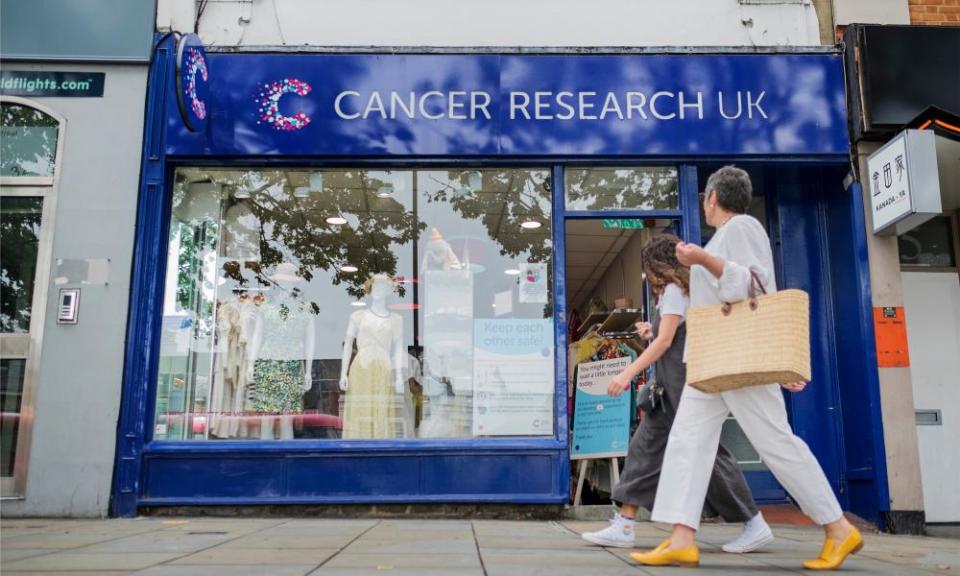UK charity shops sales suffer despite lockdown 'decluttering'

Britain’s charity shops are struggling with sales declines of as much as one-third, despite enjoying bumper stock levels – and offering huge savings – following a surge in donations after households “decluttered” during lockdown.
Oxfam, which has 595 shops, said that money coming through its tills is down by 32% on a like-for-like basis compared to last year. The British Heart Foundation (BHF), which has around 740 shops, said income is currently down around 20%, with Barnardo’s and Cancer Research UK saying they are suffering similar declines.
The lockdown has devastated charities which rely on shops for a significant chunk of their income. BHF said it lost around £60m in sales during the lockdown period, while Barnardo’s said: “We are forecasting a loss of £30m in shop income for this year.” Just keeping the shops safely closed – and paying some landlords – during the lockdown period cost Oxfam £5m a month.
Despite their humble image, Britain’s charity shops rank alongside the major high street chains as huge enterprises in their own right. BHF employs 3,500 paid staff, all furloughed during the lockdown but now back working, alongside 18,000 volunteers. Oxfam has around 1,000 paid staff and 22,000 volunteers, Cancer Research 1,900 paid staff and 11,000 volunteers.
Reopening has been hampered for some by volunteers needing to shield themselves from constant contact with the public. Oxfam said: “We are down by 40% on volunteer numbers, with many feeling uncomfortable or unable to return. We desperately need more volunteers, and have launched a recruitment campaign, including volunteers who can work from home.”
A deluge of donations has also swamped some shops. Because of the virus, bags of clothing and other items, while much welcomed, have to be put aside in store rooms for 48-72 hours, then steamed and cleaned. Changing rooms remain closed.
“Please ring before you bring” urged a spokesperson for Oxfam. “Decluttering was the tale of the lockdown. But we have to isolate items donated for 48 hours, and we can quickly run out of space.” Unlike other retail operations, where most staff are “front-of-house” with just-in-time stock delivery, in charity shops much of the work done by volunteers is behind the scenes, sorting, pricing and tagging clothing.
But Cancer Research UK said that while it enjoyed a 31% surge in donations immediately after the lockdown, “we are now tracking behind last year on donations, and are absolutely happy to take donations, especially autumn and winter clothing”.
The online operations of the major chains were halted during the lockdown, but are now expanding rapidly with more customers preferring to buy remotely. BHF says it operates the biggest online charity shop outside the USA, housed in a 21,000 sq ft warehouse in Leeds. It works over the eBay auction platform, with thousands of items on sale at any one time, ranging from (at time of writing) 4k Ultra HD 49-inch TVs at £150, antique Singer sewing machines at £33, to home exercise bikes for £15.
Celebrity donations are big sellers, with BHF currently selling items donated by Rod Stewart and his wife Penny Lancaster, such as Gucci stiletto high heels (bids of £19 at time of writing) and signed albums (around £50-£60).
Oxfam’s online operation, which includes its own-sourced items such as face masks, is enjoying sales running at around double last year’s levels. Many are brand new and untouched.
Cancer Research is trialling online sales targeting younger buyers over the Depop platform.
The charities are also trying to attract new-style donations through an eBay-led initiative launched during the pandemic called the Big Charity Sell. It lets householders sell their unwanted items on eBay and donate up to 100% of the proceeds to a charity of their choice.
On the high street, extra coronavirus cleaning requirements mean that opening hours at some chains have had to be cut. BHF says its stores are currently opening 10-4pm instead of 9-5pm, with Sunday opening also curtailed, although it hopes to restore original hours soon.
While the traditional charity shop is usually a small suburban store vacated by a previous unsuccessful business, some charities have moved into out-of-town retail parks, or operate department-store style furniture outlets.
“We have 200 big furniture shops, with our biggest at 17,000 sq ft, when the average charity shop is just 600 sq ft,” says BHF commercial director, Mike Taylor. “We will sell around 250,000 donated furniture items, with sofas typically priced at £100 or £120, and dining tables for £20. There’s a growing interest in sustainability and recycling – and they are fantastic value.”
Cancer Research says it plans to open 18 new superstores in retail parks in the next few years.
Despite the fall in sales so far this year, none of the charity shop chains contacted said they were planning to shut stores – with most admitting that recessions are generally good for their business.
“The truth is that in a recession, charity shops generally benefit. People know they can find great value and quality,” said a spokeswoman for Oxfam.
“If you look back through previous recessions, you will see that demand for second-hand and pre-loved items increases. You generally see higher sales levels while the economy is challenged,” said Cancer Research UK.
And some charity shop operators think there might even be an upside to the current conditions facing so many retailers, privately admitting that the collapse of many conventional high street chains will mean that charity shops have a wider choice of premises to move into.

